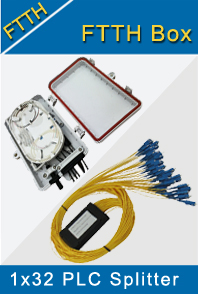-

- Sopto Home
-

- Special Topic
-

- FTTH Knowledge
-

- What is Primary Fiber Concentration Point (FCP)?
FTTH Knowledge
- Solving the FTTH Rollout Problem in Multiple Dwelling Units
- WDM PON Introduction FAQ
- A Simple Overview of Optical Power Meter
- ODN is based on PON FTTH Optical Cable Network of the Device
- Using an OTDR to be an Expert in Fiber Link Testing
- How FTTH Broadband Works?
- Connections among Fiber Terminal Boxes & Patch Cables & Pigtails
- Easy to Install a Fiber Terminal Box
- What is Arrayed Waveguide Grating?
SOPTO Special Topic
Certificate



Guarantee
Except products belongs to Bargain Shop section, all products are warranted by SOPTO only to purchasers for resale or for use in business or original equipment manufacturer, against defects in workmanship or materials under normal use (consumables, normal tear and wear excluded) for one year after date of purchase from SOPTO, unless otherwise stated...
Return Policies
Defective products will be accepted for exchange, at our discretion, within 14 days from receipt. Buyer might be requested to return the defective products to SOPTO for verification or authorized service location, as SOPTO designated, shipping costs prepaid. .....
Applications

Sopto supply the best FTTH solutions for your network!
SOPTO Products
- Fiber Optic Transceiver Module
- High Speed Cable
- Fiber Optical Cable
- Fiber Optical Patch Cords
- Splitter CWDM DWDM
- PON Solution
- FTTH Box ODF Closure
- PCI-E Network Card
- Network Cables
- Fiber Optical Adapter
- Fiber Optical Attenuator
- Fiber Media Converter
- PDH Multiplexers
- Protocol Converter
- Digital Video Multiplexer
- Fiber Optical Tools
- Compatible
Related Products
Performance Feature
FTTH Knowledge
Recommended

What is Primary Fiber Concentration Point (FCP)?
The feeder cabling will eventually need to convert to smaller distribution cables. This is achieved at the first point of flexibility within the FTTH network, which can be generally termed the Primary Fiber Concentration Point (FCP).
Ideally, the FCP should be positioned as close to subscribers as possible, shortening subsequent distribution cable lengths and hence minimizing further construction costs.
In principle, the location of the FCP may be determined by other factors such as the position of ducts and access points.
Feeder cable fibers are broken down and spliced into smaller groups for further routing via the outgoing distribution cables.
The FCP unit may take the form of an underground or pole mounted cable joint closure designed to handle a relatively high number of fibers and connecting splices. Alternatively, a street cabinet structure may be used.
In either case, entry and further reentry into a FCP will be required to configure or reconfigure fibers or to carry out maintenance and fiber testing. This activity must be achieved without any possibility of disturbing existing fiber circuits.
Underground and pole mounted cable joint closures are relatively secure and out of sight but immediate access may be hindered as special equipment is required for access.
For street cabinet based FCPs, the security and protection from vandal attack should be considered. However, immediate access to fibre circuits should be relatively simple.
Note: All fibre termination points within the FTTH network should be treated as points of flexibility in terms of providing fiber routing options.



